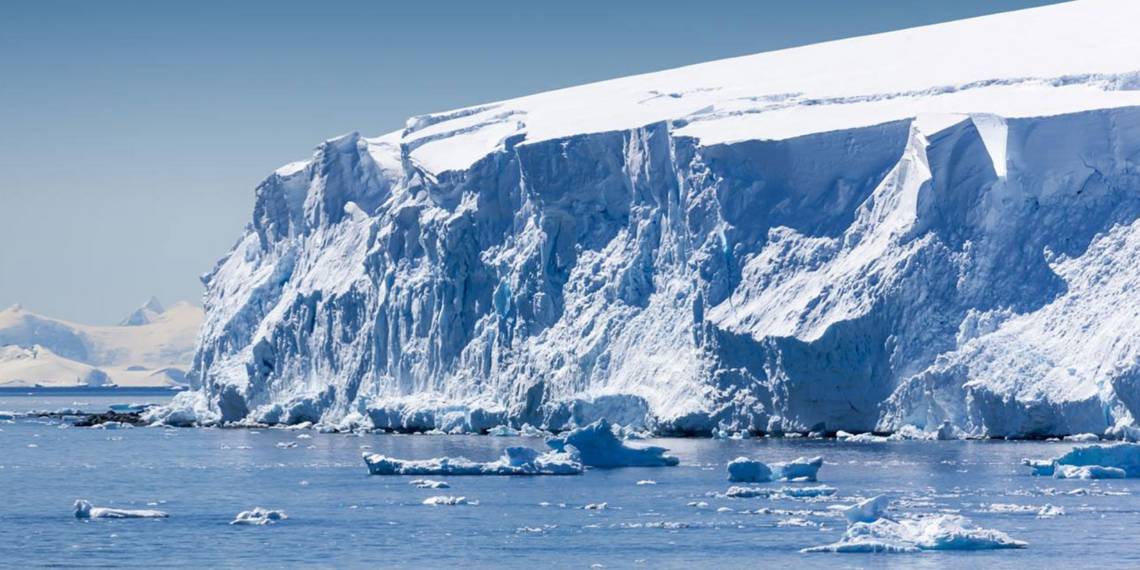by Chris Morrison, Daily Sceptic:

The catastrophisation of natural events and weather is relentless across the mainstream media as populations continue to be nudged towards an elitist command-and-control Net Zero future. The BBC recently copied a headline from the U.S.-based National Snow and Ice Data Center (NSIDC) claiming Antarctica sea ice had hit a “new record low”. Inexplicably missing from the story was the later observation from the NSIDC that since accurate satellite records began in 1979, the trend in the minimum ice extent is “near zero”. Any loss was said to be “not statistically significant”.
TRUTH LIVES on at https://sgtreport.tv/
To be fair to the writer, BBC science correspondent Jonathan Amos, he did report later in the story that scientists consider the behaviour of Antarctica sea ice to be a “complicated phenomenon which cannot simply be ascribed to climate change”. Of course, as regular Daily Sceptic readers are aware, the Antarctic is a difficult hunting ground for climate catastrophists since over the last seven decades there has been little or no warming over large areas of the continent.

According to a recent paper (Singh and Polvani), the Antarctica sea ice has “modestly expanded”, and warming has been “nearly non-existent” over much of the ice sheet. According to NASA figures, the ice loss is 0.0005% per year. Down at the South Pole, even the most inventive climate alarmists are defeated. In 2021 it recorded its coldest six-month winter since records began, and last year the temperature was 0.4°C colder than the average over the last 30 years. In addition, the Pole recorded no less than seven new daily temperature lows.
The map above shows some warming in the western part of Antarctica, and it is to this area that climate warriors return – again and again. The day before his sea ice story was published, Amos ran with a routine BBC house scare about the Thwaites glacier, often known in green circles as the ‘Doomsday Glacier’. Amos states that glaciers such as Thwaites located in the west may be more sensitive to changes in sea temperature than was thought. “Its susceptibility to climate change is a major concern to scientists because if it melted completely, it would raise global sea levels by half a metre,” he said.
Many of the problems surrounding the unproven hypothesis of human-caused global warming is that it often fails to correlate with observable reality. Why would well-mixed atmospheric carbon dioxide produce a relative warm spot in Antarctica, but leave the rest of the vast continent in a static deep freeze? In 2017, scientists discovered 91 volcanoes in the West Antarctica Rift System. It brought the number of volcanoes discovered in the area to 138. Their heights ranged from 300 to 12,600 feet, with the tallest as high as Mount Fuji in Japan. The scientists noted that even dormant volcanoes can melt ice because of the high temperature they generate. “Volcanic activity may increase and this, in turn, may lead to enhanced water production and contribute to further potential ice-dynamical instability,” the scientists stated.
Again, to be fair to Amos, he does consider other causes of Antarctica ice stability, although the article is headlined “climate change”. His reporting is mercifully free of the emotional gushings produced by the BBC’s green activist-in-residence Justin Rowlatt. When Rowlatt flew to the area, he witnessed “an epic vision of shattered ice”. To him, the Antarctic is the “frontline of climate change”. Amos does note that Thwaites, a glacier the size of Florida, has retreated in some places by 14 km since the late 1990s. But such movement does not seem unusual. Recently a group of oceanographers discovered that parts of Thwaites had retreated at twice the rate in the past, when human-caused CO2 could not have been a factor. The retreat could have occurred centuries ago, and is said to have been “exceptionally fast”.
Meanwhile, research has just been published that indicates Antarctica could have been warmer in the recent past from 7,000 to 500 years ago. This type of research is always interesting since it helps debunks a common claim made by alarmists that current temperatures are the highest over the last three million years. But numerous scientific studies have shown that temperatures across the planet have been much warmer for recent periods in the Holocene. This latest study in Antarctica found remains of elephant seals along the Victoria Land Coast of the Ross Embayment, which borders both the West and East Antarctic ice sheets. These days, the area is largely free of elephant seals because of shelves of permanent sea ice frozen to the beaches. It is suggested that seals were able to occupy the beaches in a period of warmth before extensive sea ice pushed them off the present day coast.



